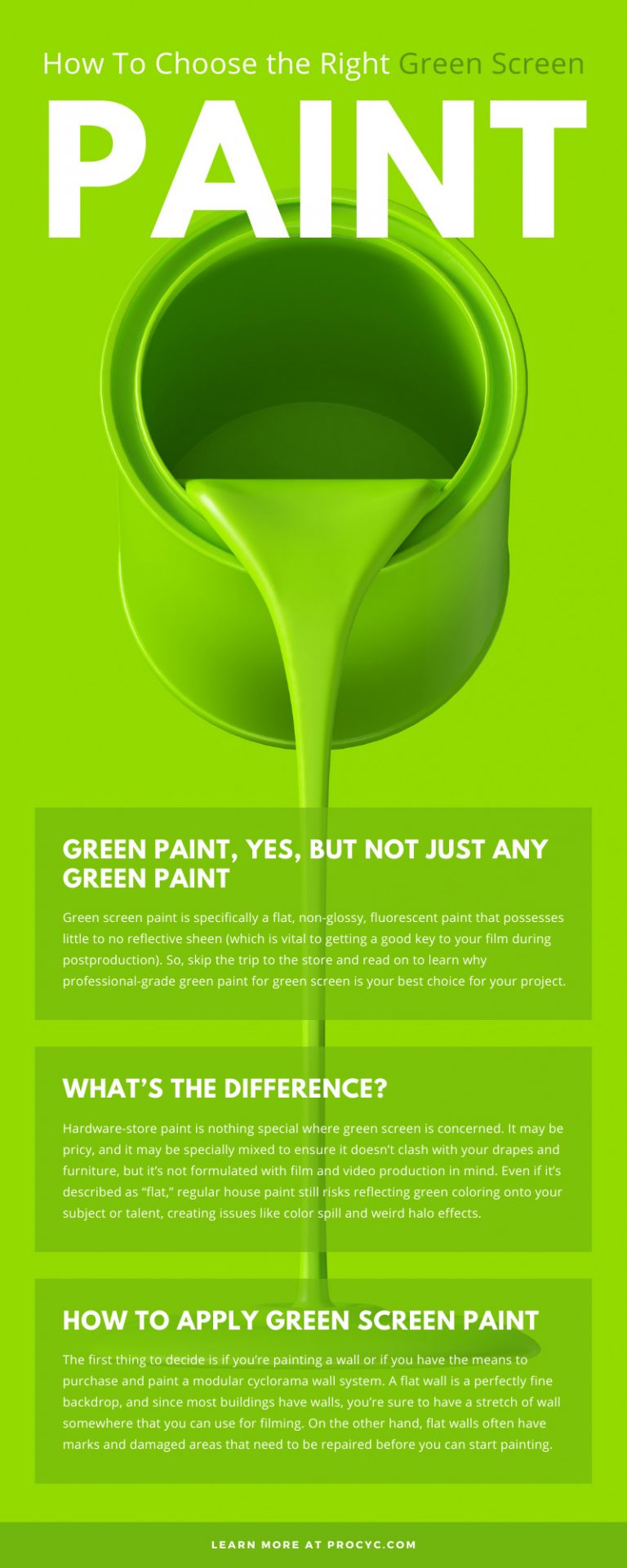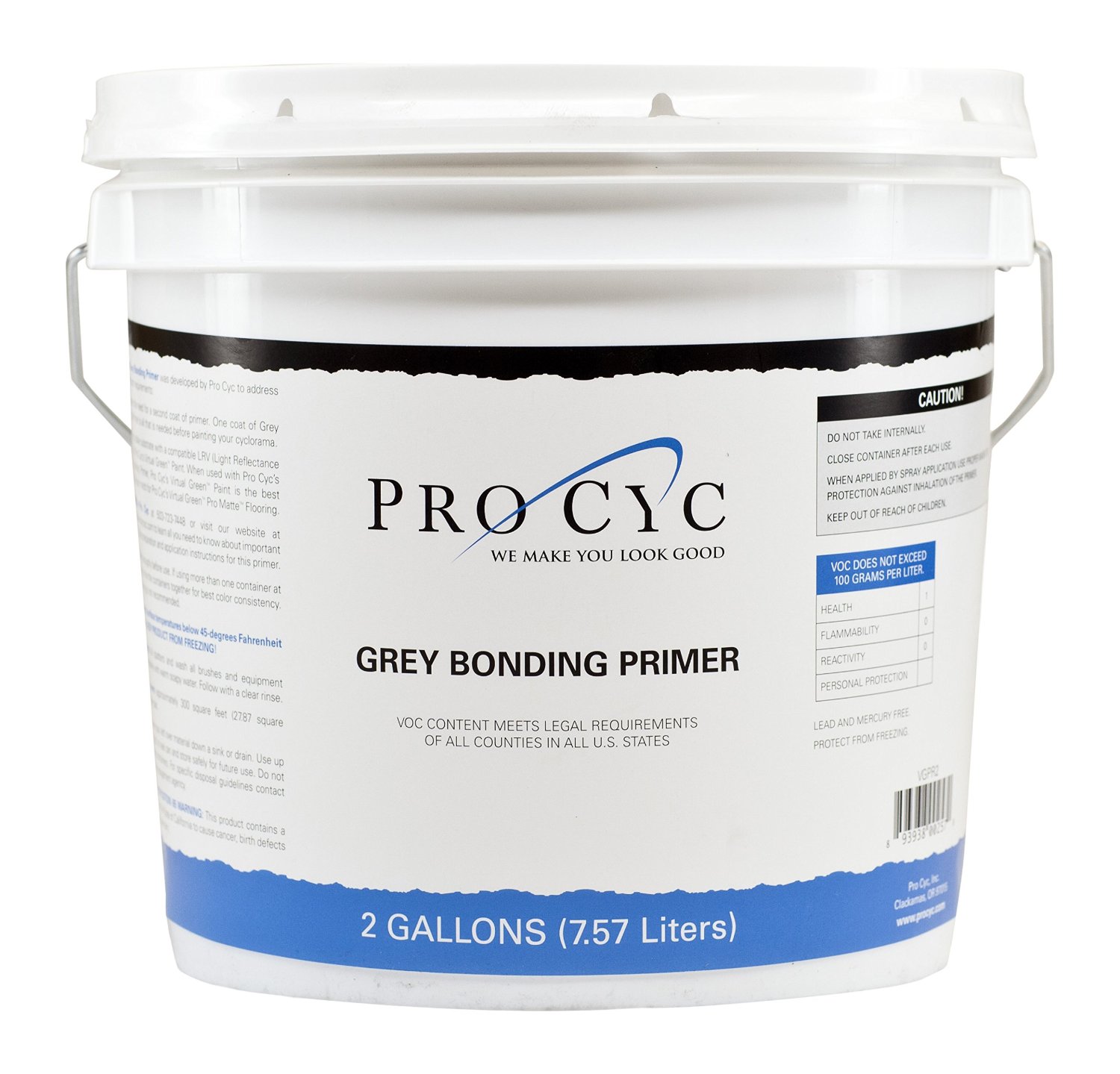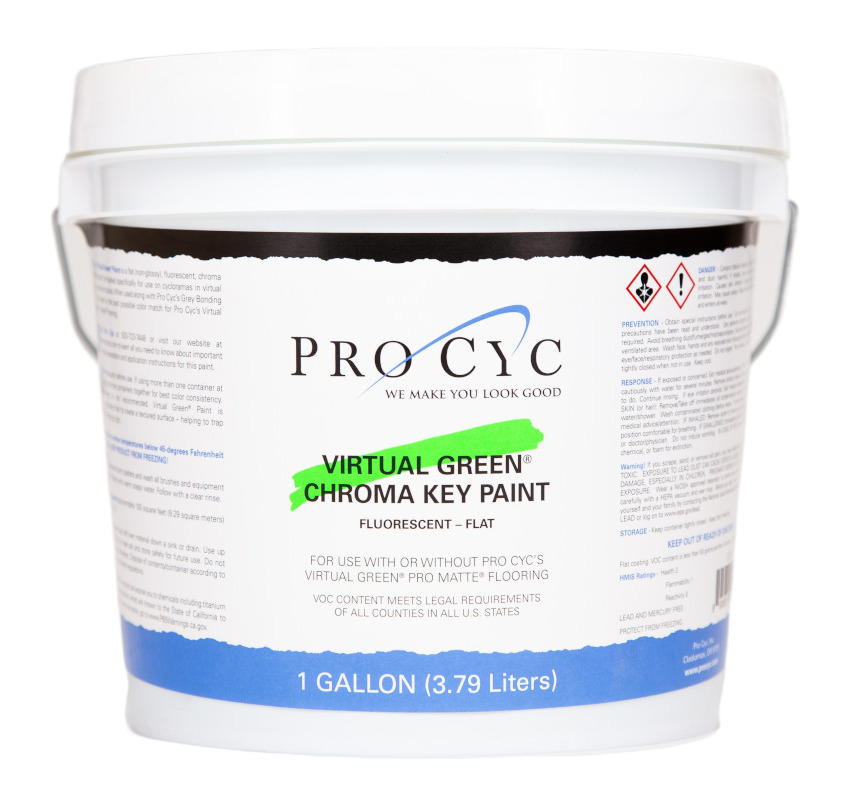Let’s assume you’ve been using green screen technology in your videos for a while now, and so far, it’s worked out well. Ever since you invested in a webcam background for your office, the flexibility and idea-generating nature of green screen has added professionalism and impressive effects to your presentations and commercials, generating new leads and impressing customers, investors, and the public. Perhaps it’s time to expand and get a little more serious about your production values and, by extension, your production space.
If the new leads have led to expansion, it’s time to consider setting up a more permanent studio in your offices with a dedicated set for future film shoots. Fabric has taken you this far, but now you’re ready for the permanence and reliability of green paint for your green screen effects. Intrigued but not sure how to proceed? Contact Pro Cyc for greater details on how making the switch to green screen paint can make your shoots easier and your finished film products look sharper. Until then, here are the basics of how to choose the right green screen paint.
Green Paint, Yes, but Not Just Any Green Paint
Common sense is telling you that painting a green screen studio should be simple enough to do, right? Yes, you certainly could go to your local hardware, paint, or big box store and pick up a few cans of emerald, pine, or asparagus-colored paint and start slapping it on your studio’s walls. Because green screen paint is priced to reflect its high-grade nature and purpose, you might think you’re getting a deal by going for the cheap stuff. But the truth is, not just any green paint will do for chroma key production.
Green screen paint is specifically a flat, non-glossy, fluorescent paint that possesses little to no reflective sheen (which is vital to getting a good key to your film during postproduction). So, skip the trip to the store and read on to learn why professional-grade green paint for green screen is your best choice for your project.
What’s the Difference?
Hardware-store paint is nothing special where green screen is concerned. It may be pricy, and it may be specially mixed to ensure it doesn’t clash with your drapes and furniture, but it’s not formulated with film and video production in mind. Even if it’s described as “flat,” regular house paint still risks reflecting green coloring onto your subject or talent, creating issues like color spill and weird halo effects. You may not notice any problems while shooting, but during postproduction, all that reflection will become apparent, leading to longer hours and greater costs in postproduction.
How To Apply Green Screen Paint
The first thing to decide is if you’re painting a wall or if you have the means to purchase and paint a modular cyclorama wall system. A flat wall is a perfectly fine backdrop, and since most buildings have walls, you’re sure to have a stretch of wall somewhere that you can use for filming. On the other hand, flat walls often have marks and damaged areas that need to be repaired before you can start painting. Also, in the case of brick, concrete, and other walls, a porous or bumpy surface can cause shadows that will interfere with drawing a good key. A cyclorama wall system, conversely, provides a smooth and curving surface that allows more angles and the illusion of an infinite background. Whichever you choose, it’s all a matter of working with what you’ve got.
When painting, it’s best to first patch up any imperfections in the walls. Use your best judgment but strive for as smooth a surface as possible. You’ll want to thoroughly clean any dirt, grease, or similar schmutz off the surface. Next, lay down a coat of grey bonding primer with a roller, then allow it to dry. After stirring the paint, lay it down in long, even coats straight from the can. Some paints require dilution or mixing, but this isn’t necessary with green screen paint. Make sure strokes overlap.
How To Maintain Green Screen Paint
Some sites recommend going with a flat enamel with green screen paint for the sake of clean-ups, but this still risks reflection. Virtual Green® Chroma Key Paint is easily washable with warm, soapy water. Be sure to dry it off before your next production! Keep a can of green screen paint handy for touch-ups, though be prepared to repaint the space at some point in the future. Lay down ground rules for working around the green screen set. For example, after shoots, cover up the wall with a protective screen and post a “no touching” sign nearby. If the floor is painted as well—though this does risk color spill, as pointed out elsewhere—be sure no one is scuffing it up with their shoes. Institute a stocking feet rule, leaving footwear off until it’s go time!
Green Screen Paints Offered by Pro Cyc
Still wondering how to choose the right green screen paint? Contact us. Pro Cyc has a selection of Virtual Green® Chroma Key Paint and Grey Bonding Primer, which were created to work best with most surfaces, especially our cyclorama modular walls, and to match up with our US-made Virtual Green® Pro Matte® Flooring and other green screen products.
Our paint requires only one to two coats for thorough coverage, compared to the multiple layers needed by hardware store brands. One gallon of green screen paint covers up to 300 square feet of space for a single coat. For two coats, we suggest picking up another gallon for each 100 extra square feet. And as mentioned earlier, it’s wise to keep a can handy for future repairs, just in case you need to cover up any smudges or other marks. Green screen paint may be pricier than store-bought paint, but it’ll save you plenty in terms of production costs and values in the long run.





